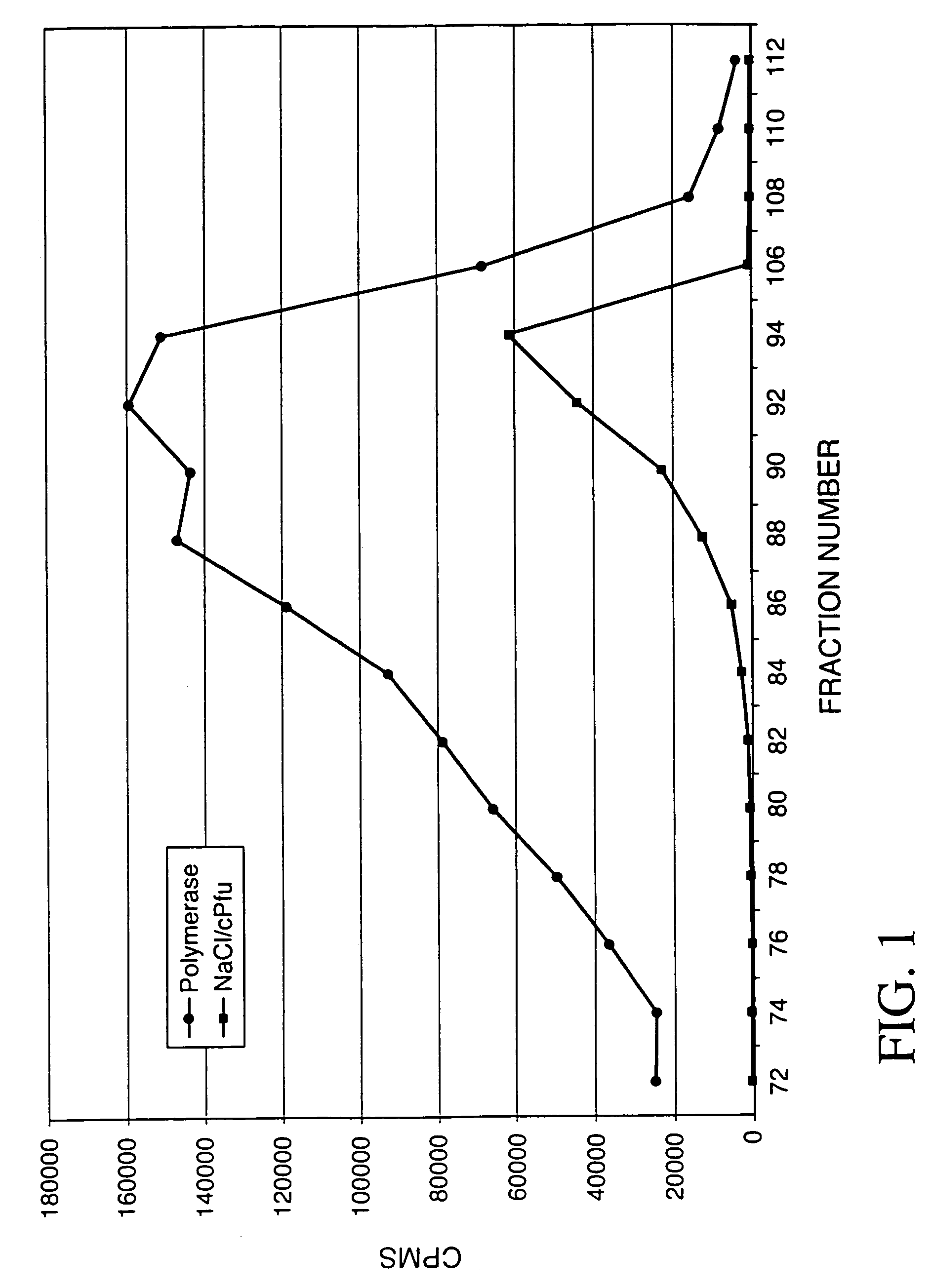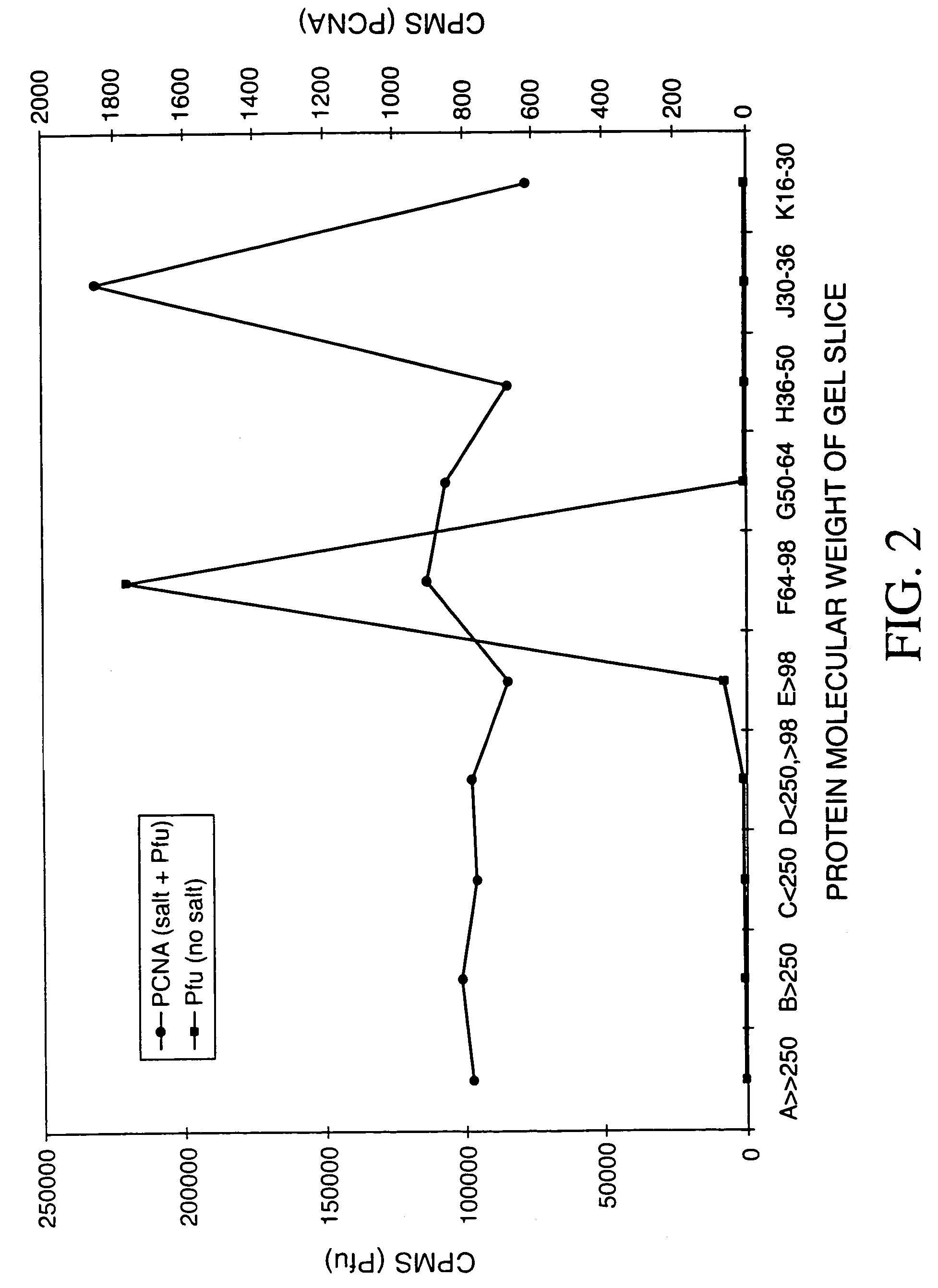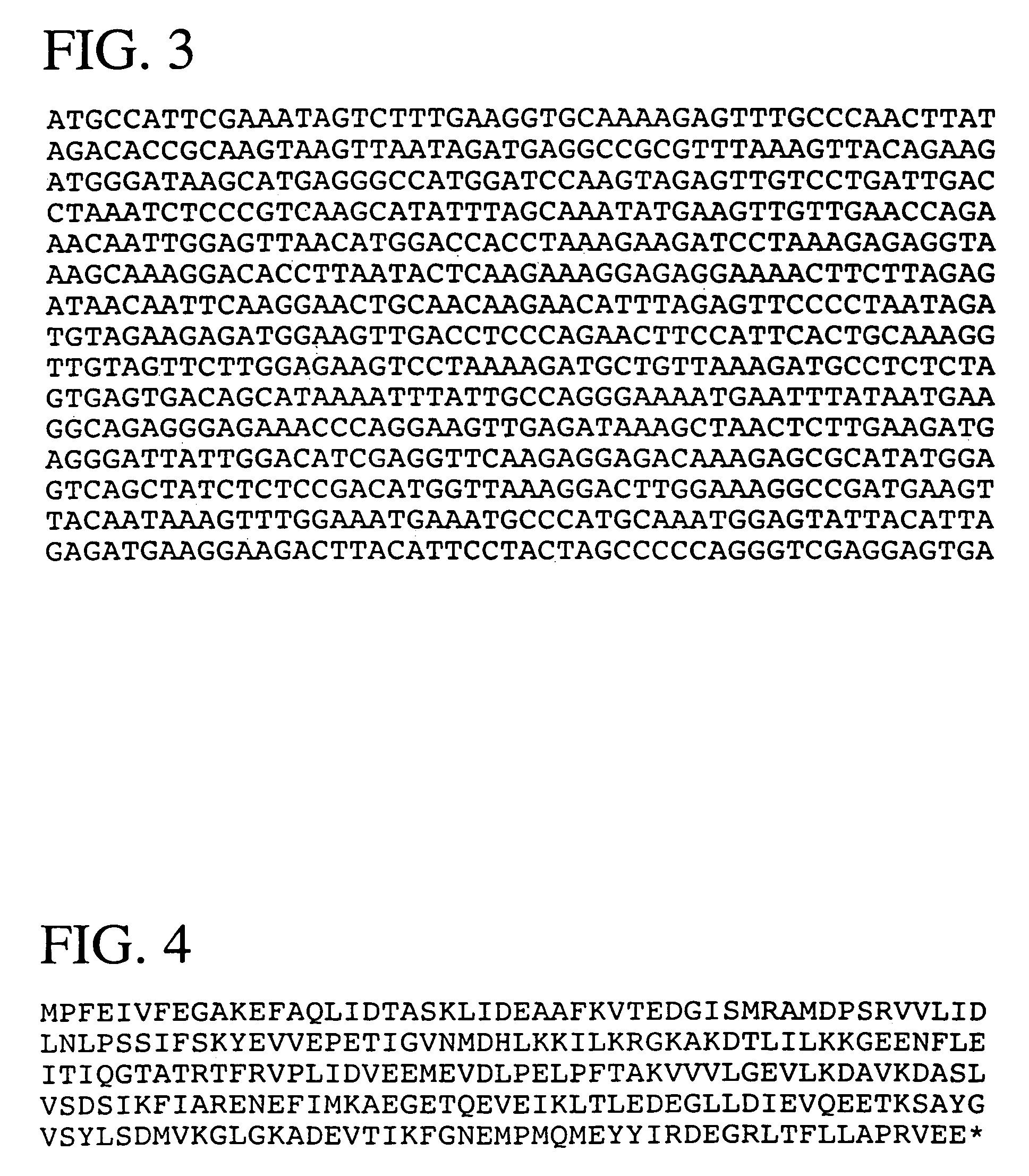[0002]The invention relates to the field of replicating, amplifying, and sequencing nucleic acids. Further, this invention relates to novel proteins that enhance the activity of the polymerases.
[0003]
In vitro polymerization techniques have enormously benefited the fields of
biotechnology and
medicine. The ability to manipulate nucleic acids with polymerization reactions greatly facilitates techniques
ranging from
gene characterization and
molecular cloning (including, but not limited to sequencing,
mutagenesis, synthesis and amplification of DNA), determining allelic variations, and detecting and screening of various diseases and conditions (e.g.,
hepatitis B).
[0006]Various methods to improve PCR exist. One approach is to optimize the
reaction conditions, e.g., such as the pH, dNTP concentrations, or reaction temperatures. Another approach is to add various chemical compounds, e.g.,
formamide (Sarkar, G., et al. Nucl. Acids Res. 18: 7465 (1990)), tetramethyammonium
chloride, and
dimethyl sulfoxide (Chevet et al., Nucl. Acids Res. 23:3343-3344 (1995); Hung et al., Nucl. Acids Res. 18:4953 (1990)) to either increase the specificity of the PCR reaction and / or increase yield. Other attempts include adding various proteins, such as replication accessory factors. Replication accessory factors known to be involved in
DNA replication have also increased yields and the specificity of PCR products. For example, E. coli single-stranded
DNA binding protein, such as RFA, has been used to increase the yield and specificity of
primer extension reactions and PCR reactions (U.S. Pat. Nos. 5,449,603, and 5.534,407). Another
protein, the
gene 32
protein of phage T4, appears to improve the ability to amplify larger DNA fragments (Schwartz et al., Nucl. Acids Res. 18: 1079 (1990).
[0007]An important modification that has enhanced the ease and specificity of PCR is the use of Thermus aquaticus (Taq)
DNA polymerase in place of the
Klenow fragment of E. coli DNA pol I (Saiki et al., Science 230: 1350-1354 (1988)). The use of this thermostable
DNA polymerase obviates the need for repeated
enzyme additions, permits elevated annealing and
primer extension temperatures, and enhances specificity. Further, this modification has enhanced the specificity of binding between the primer and its template. But,
Taq polymerase has a fundamental drawback because it does not have 3′ to 5′
exonuclease activity and, therefore, cannot excise incorrect nucleotides added to the ends of the amplified products. Due to this limitation, the fidelity of Taq-PCR reactions typically have suffered. Therefore, those in the field have searched for another thermostable
polymerase that has 3′ to 5′
exonuclease activity.
[0010]According to certain embodiments, the invention provides methods of, and materials for, enhancing the
polymerase activity of Pfu polymerase. Certain embodiments involve major components of the replication machinery in eukaryotes, e.g.: a
helicase enzyme that unwinds the DNA
helix and, thereby, provides a single-stranded
DNA template; single-stranded DNA binding proteins (RFA) that bind and stabilize the resulting single-stranded
DNA template; a “sliding clamp”
protein (PCNA) that stabilizes the interaction between the polymerase and the primed single-stranded
DNA template and that enhances synthesis of long DNA strands (also known as “
processivity”); and a “clamp-loading” protein complex (RFC) that assembles the PCNA protein.
[0020]In certain embodiments of the inventive methods, the archaeal polymerase is Pfu polymerase. In certain embodiments of those methods, the archaeal polymerase is combined with another polymerase, such as Taq. In other embodiments of the these methods, an archaeal dUTPase may also be included to enhance polymerase activity.
 Login to View More
Login to View More 


